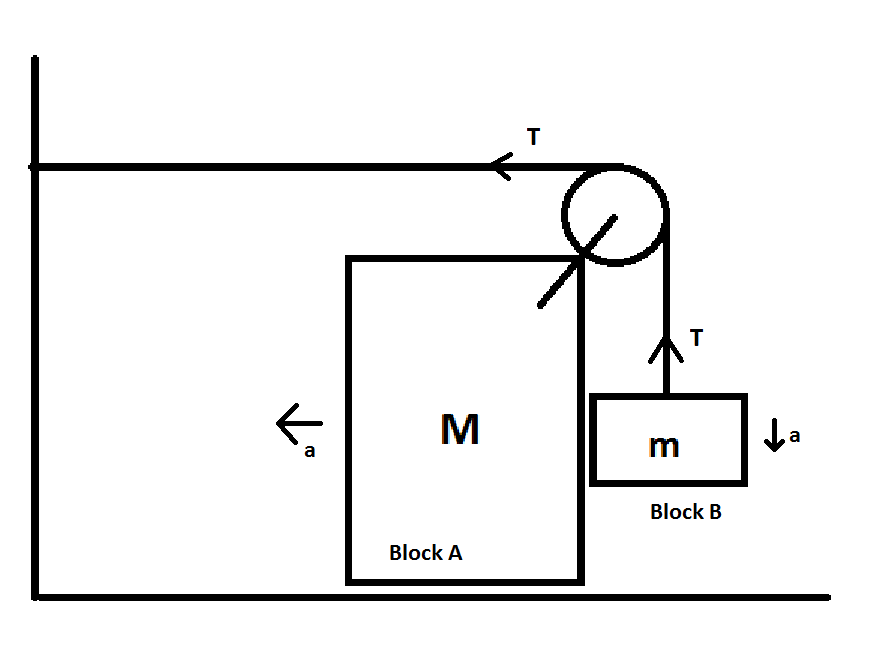How is the block accelerating horizontally?

Immediately after release, Block B would have some acceleration in the downward direction. Using constraint equations, we can easily prove that there would be an equal acceleration in Block A in the horizontal direction.
We have the following equations for the two blocks
Block A: T=Ma in the horizontal direction
Block B: mg-T=ma in the vertical direction
On solving, we have a=mg/(m+M)
But, wouldn't the block B also have horizontal acceleration? If Block A moves in the horizontal direction, wouldn't Block B also move with the same acceleration in this direction. But, if this is the case, what force is acting on the block in that direction? It cannot be a reaction force between the blocks as that would further push Block B away from A.
If Block B does not accelerate in the horizontal direction, how would the system behave after some time? (i.e. some instants after the release of the system) Would the distance between the blocks increase? I don't think that should happen. But, if that is not the case, what makes Block B move in the horizontal direction?
Thank you in advance. :D
Easy Math Editor
This discussion board is a place to discuss our Daily Challenges and the math and science related to those challenges. Explanations are more than just a solution — they should explain the steps and thinking strategies that you used to obtain the solution. Comments should further the discussion of math and science.
When posting on Brilliant:
*italics*or_italics_**bold**or__bold__paragraph 1
paragraph 2
[example link](https://brilliant.org)> This is a quote# I indented these lines # 4 spaces, and now they show # up as a code block. print "hello world"\(...\)or\[...\]to ensure proper formatting.2 \times 32^{34}a_{i-1}\frac{2}{3}\sqrt{2}\sum_{i=1}^3\sin \theta\boxed{123}Comments
I got this.